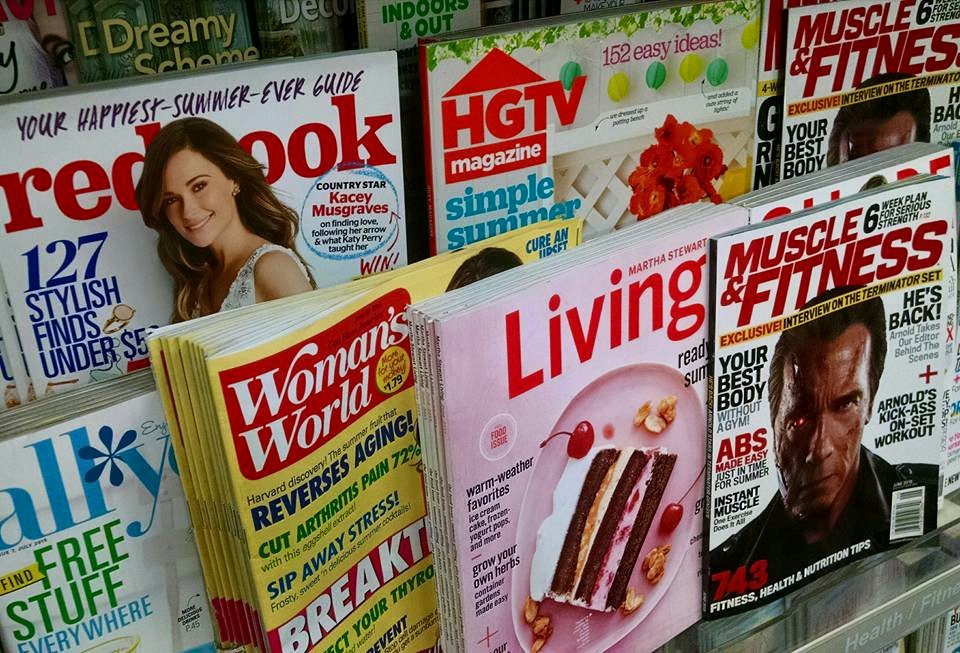by Terry Whalin
The bulk of my magazine writing is done on assignment. How do you get an assignment? Which magazines do you read on a consistent basis? Your familiarity with these publications and the types of articles that they publish gives you some needed background.
Pull out the magazines that come into your home.
Organize them with several months from the same publication. Then study the contents. What types of articles do they publish? How-to articles? Personal Experience? For example, at Decision, where I used to be an editor, almost every article is a first-person, personal experience story. If you send them a how-to article which is not written in the first person, you are asking for rejection. Or if you write a story about someone else in the third-person, you will again invite rejection.
After you have studied the publications, then write the publication for their writers’ guidelines. Almost every magazine has guidelines for their authors. You can also use google and often find these guidelines online. Write a simple letter asking for guidelines and enclose a self-addressed, stamped envelope for the response. You can find the address for the publication usually on the masthead of the magazine under editorial offices. Or use The Christian Writers Market Guide by Jerry B. Jenkins. This guide is a critical tool if you are going to write for the Christian marketplace. After reading through the guidelines, you will have some additional information. Does the publication accept query letters or prefer full manuscripts? Some magazines have a query only system. This means that you have to write a query letter (one page) and get a letter of request from the editor, before sending the full manuscript. Other publications like Decision do not look at query letters but only completed manuscripts.
What’s a query letter? Entire books have been written on this topic and one of the best is Irresistible Query Letters by Lisa Collier Cool (Writer’s Digest Books). A query is a single-page letter which sells your story idea. It has a four paragraph formula. The first paragraph is a creative beginning for your article. You don’t write the entire article–only the first paragraph which captures the reader’s interest. The purpose of this first paragraph is simply to capture the editor’s attention. I won’t walk you through the day of an editor but since I’ve been one for years, I know they are involved in a multitude of tasks. For editors to read query letters, it is often done at the end of the day, late at night or in a car pool on the way home. It must be interesting.
The second paragraph includes the main points of how you will approach the article. The third paragraph gives your personal qualifications for this topic and your writing credits (if any). It basically answers the question, why should you of all the writers get this assignment? Highlight your own area of expertise in this paragraph.
The final paragraph says how soon you could write the article (give yourself enough time for example, “three weeks from assignment”) and says you are enclosing a self-addressed, stamped envelope and looking forward to their reply. I often send the letter to as many as ten different publications at the same time.
Within the magazine business, there is an on-going discussion about simultaneous submissions (where you send the same finished article to several publications). If you do this, you may end up on the black list of authors. Each publication has a list of people that they will not work with. You don’t want to be on that list. Also each publication has a list of authors they use regularly and call with ideas. Your goal is to get on this particular list of regular contributors.
From my perspective, a simultaneous query is not the same as a finished article. Go ahead and query several magazines at the same time on the same topic if you think you can write several different articles on the same subject. One magazine may ask for 500 words on the topic while another may approach it from an entirely different viewpoint and ask for 2,000 words. Your illustrations and information will be considerably different. If you send it to ten magazines, you may get ten rejections. On the other hand, perhaps you will get an acceptance or two, or at least a request to see the entire article on speculation. “On speculation” means that the editor is not under obligation to purchase your article if it doesn’t meet the periodical’s standards or expectations.
[bctt tweet=”No one gets magazine assignments just by thinking about it” username=”@A3forme @terrywhalin “] As a writer, you have to take action and be regularly pitching your ideas to editors and writing query letters. Then when you get an assignment, write an excellent article and submit it on or ahead of the deadline. As you learn to write a query letter and take consistent action, you will increase your odds of publication and get published in magazines.
Terry Whalin, a writer and acquisitions editor at Morgan James Publishing, lives in Colorado. A former magazine editor, Whalin has written for more than 50 publications including Christianity Today and Writer’s Digest. He has written more than 60 nonfiction books including Jumpstart Your Publishing Dreams. His latest book is Billy Graham, A Biography of America’s Greatest Evangelist and the book website is at: http://BillyGrahamBio.com Watch the short book trailer for Billy Graham at: http://bit.ly/BillyGrahamBT His website is located at: www.terrywhalin.com. Follow him on Twitter at: https://twitter.com/terrywhalin






No Comments